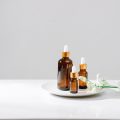1. Why Sun Protection Is Crucial After Cosmetic Procedures
After a cosmetic procedure, your skin is more sensitive and vulnerable to damage, especially from the sun. Whether you had a chemical peel, laser treatment, microneedling, or even injectables, your skin’s natural barrier is often temporarily weakened. This means it’s less able to protect itself from harmful UV rays. Understanding why sun protection is so important can help you avoid unwanted side effects and support healthy healing.
How Sun Exposure Affects Post-Treatment Skin
Sun exposure right after a cosmetic procedure can lead to several problems. Here’s what can happen if you don’t take precautions:
| Risk | Description |
|---|---|
| Hyperpigmentation | Your skin may develop dark spots or uneven tone because post-treatment skin produces pigment more easily in response to UV rays. |
| Delayed Healing | The healing process slows down when the skin is exposed to the sun, which can result in prolonged redness, swelling, and discomfort. |
| Scarring | UV exposure increases the risk of scars becoming more noticeable or permanent. |
| Sensitivity & Irritation | Treated skin is already delicate; sunlight can worsen irritation and cause extra dryness or peeling. |
Why Your Skin Is More Sensitive After Treatment
During cosmetic procedures, the outer layers of your skin are often disrupted or removed. This triggers a natural healing response but also makes your skin thinner and less capable of blocking out environmental stressors like UV radiation. Even on cloudy days or during quick trips outside, UV rays can reach your skin and cause issues.
The Importance of Immediate Sun Protection
The first few days (and sometimes weeks) after your procedure are the most critical for sun protection. During this time, even minimal sun exposure can have lasting negative effects. That’s why dermatologists always recommend being extra careful with sun exposure after any cosmetic treatment.
Understanding Your Procedure: Specific Risks and Recovery Needs
When you undergo a cosmetic procedure, your skin becomes more sensitive and vulnerable to sun damage. Different treatments have unique recovery requirements, and knowing these can help you protect your results and avoid complications. Here’s a simple breakdown of common cosmetic procedures, their effects on your skin, and why sun protection is critical after each one.
Common Cosmetic Procedures & Why Sun Protection Matters
| Procedure | What It Does | How It Affects Your Skin | Why Sun Protection Is Essential |
|---|---|---|---|
| Chemical Peels | Removes the top layers of skin to improve texture and tone | Makes skin raw, sensitive, and more prone to irritation | New skin is highly susceptible to UV damage and discoloration |
| Laser Treatments (e.g., laser resurfacing) | Targets deeper skin layers for rejuvenation or pigmentation issues | Leaves skin temporarily inflamed, red, or even slightly wounded | Sun exposure can worsen redness, cause burns, or result in dark spots |
| Microneedling | Uses fine needles to create tiny punctures for collagen stimulation | Creates micro-injuries that need time to heal properly | UV rays can irritate healing skin and lead to uneven pigmentation |
| Dermal Fillers & Botox | Smooths wrinkles or adds volume using injectables | Mild swelling or bruising at injection sites | Sun exposure can increase swelling or prolong bruising during recovery |
| Surgical Procedures (e.g., facelifts) | Tightens or reshapes facial features through incisions and sutures | Sutures and scars are especially delicate as they heal | Direct sun can darken scars permanently and slow healing process |
The Bottom Line on Recovery Needs:
Your skin’s ability to recover from a cosmetic procedure depends on how well you protect it from the sun. Each treatment leaves your skin more exposed to harmful UV rays in its own way. By understanding the risks associated with your specific procedure, you can take the right steps to shield your skin and get the best possible results.
![]()
3. Choosing the Right Sunscreen: What to Look For
After a cosmetic procedure, your skin becomes more sensitive and vulnerable to sun damage. Picking the right sunscreen is one of the most important steps you can take to protect your healing skin. Here’s what you need to know:
The Importance of Broad-Spectrum SPF
Look for sunscreens labeled “broad-spectrum.” This means they protect against both UVA and UVB rays. UVA rays can cause aging and long-term skin damage, while UVB rays are responsible for sunburn. Both types can harm freshly treated skin and slow down the healing process.
| Type of Ray | What It Does | Why It Matters After Cosmetic Procedures |
|---|---|---|
| UVA | Causes aging, wrinkles, and long-term damage | Can worsen scars and pigment changes |
| UVB | Causes sunburns | Makes healing skin more likely to burn and blister |
Physical vs. Chemical Sunscreens
Sunscreens come in two main types: physical (also called mineral) and chemical. Here’s how they’re different:
| Sunscreen Type | Main Ingredients | How It Works | Best For Healing Skin? |
|---|---|---|---|
| Physical (Mineral) | Zinc oxide, Titanium dioxide | Sits on top of the skin and reflects UV rays away from your skin’s surface | Yes – gentler, less likely to irritate sensitive or healing skin |
| Chemical | Oxybenzone, Avobenzone, Octinoxate (and others) | Absorbs into the skin and turns UV rays into heat, which is then released from the body | No – can cause irritation or allergic reactions on delicate post-procedure skin |
Top Recommendations for Sensitive, Healing Skin
- Choose a physical (mineral) sunscreen. Look for active ingredients like zinc oxide or titanium dioxide at 10% or higher for strong protection.
- Aim for SPF 30 or higher. This provides reliable daily protection without being too heavy on the skin.
- Select fragrance-free and hypoallergenic formulas. These reduce your risk of irritation while your skin is repairing itself.
- Avoid spray sunscreens and stick with creams or lotions. Creams provide more even coverage and are less likely to miss spots on tender areas.
- If possible, patch-test any new product before applying it all over your face or treated area.
- Reapply every 2 hours if outdoors, even on cloudy days.
4. Everyday Sun Protection Habits
After a cosmetic procedure, your skin is more sensitive and needs extra care to avoid sun damage. Building everyday sun protection habits can help your skin heal better and look its best. Here are some simple tips you can follow:
Wear Protective Accessories
Adding hats and sunglasses to your daily outfit is an easy way to shield your face and eyes from harmful UV rays. Wide-brimmed hats offer the best protection for your cheeks, forehead, and neck. Sunglasses with UV protection keep the delicate skin around your eyes safe.
| Accessory | Benefit |
|---|---|
| Wide-brimmed hat | Covers face, neck, and ears from direct sunlight |
| UV-blocking sunglasses | Protects eyes and prevents wrinkles around them |
| Light scarf or mask | Adds extra coverage for sensitive areas after treatment |
Seek Shade Whenever Possible
If you’re spending time outside, try to stay in the shade—especially between 10 a.m. and 4 p.m. when the sun’s rays are strongest. Sitting under umbrellas, awnings, or trees can make a big difference for your healing skin.
Reapply Sunscreen Regularly
Even if you’re using a high-SPF sunscreen, it’s important to reapply it every two hours, or more often if you’re sweating or swimming. Look for broad-spectrum sunscreens that protect against both UVA and UVB rays. Don’t forget to apply sunscreen on commonly missed spots like your ears, the back of your neck, and the tops of your hands.
| When to Reapply Sunscreen | Why It Matters |
|---|---|
| Every 2 hours outdoors | Sunscreen wears off due to sweat or rubbing |
| After swimming or sweating | Water and sweat wash away protection |
| If wiping your face or body | Towel use removes sunscreen layers |
Dress Smart for Sun Safety
Wearing long sleeves, pants, or clothing made from tightly woven fabric adds another layer of protection. Some brands even offer UPF-rated clothes designed for sun safety.
Key Takeaways for Daily Sun Care:
- Use hats and sunglasses whenever outdoors.
- Stick to shaded areas as much as possible.
- Reapply sunscreen often—don’t just do it once in the morning.
- Cover up with protective clothing for added safety.
Your skin will thank you for these daily habits as it recovers and stays healthy after your cosmetic procedure.
5. When to Resume Outdoor Activities Safely
After a cosmetic procedure, your skin is more sensitive and vulnerable to sun damage. Knowing when its safe to get back outside can make a big difference in your recovery and results. Here’s what you need to know about timing and watching for signs that your skin is ready for more sun exposure.
General Guidelines for Sun Exposure After Cosmetic Procedures
| Procedure Type | Recommended Wait Time Before Sun Exposure |
|---|---|
| Chemical Peels | 2-4 weeks |
| Laser Treatments | 2-4 weeks or as directed by your provider |
| Microneedling | 1-2 weeks |
| Injectables (Botox, Fillers) | 24-48 hours (with sunscreen) |
| Facials/Mild Exfoliation | 3-7 days (with sunscreen) |
Please note: These are general timelines; always follow your provider’s specific instructions.
Signs Your Skin Is Ready for Sunlight Again
- No redness, swelling, or irritation present
- Your skin feels comfortable (not sensitive or tender to the touch)
- No scabbing, peeling, or open wounds remain
- Your provider has cleared you for normal activities
Why It’s Important to Check With Your Provider
Your recovery depends on many factors like your skin type, the procedure performed, and how well you follow aftercare instructions. Even if your skin looks and feels better, it’s crucial to check in with your cosmetic provider before increasing sun exposure. They can let you know if it’s safe based on your unique healing process.
Quick Tips for Safe Outdoor Activities Post-Procedure:
- Avoid peak sun hours (10 a.m. to 4 p.m.) even after you’re cleared for sun exposure.
- Wear broad-spectrum sunscreen SPF 30 or higher every day.
- Add extra protection with wide-brimmed hats and sunglasses.
- Keep up with gentle skincare routines as recommended by your provider.


